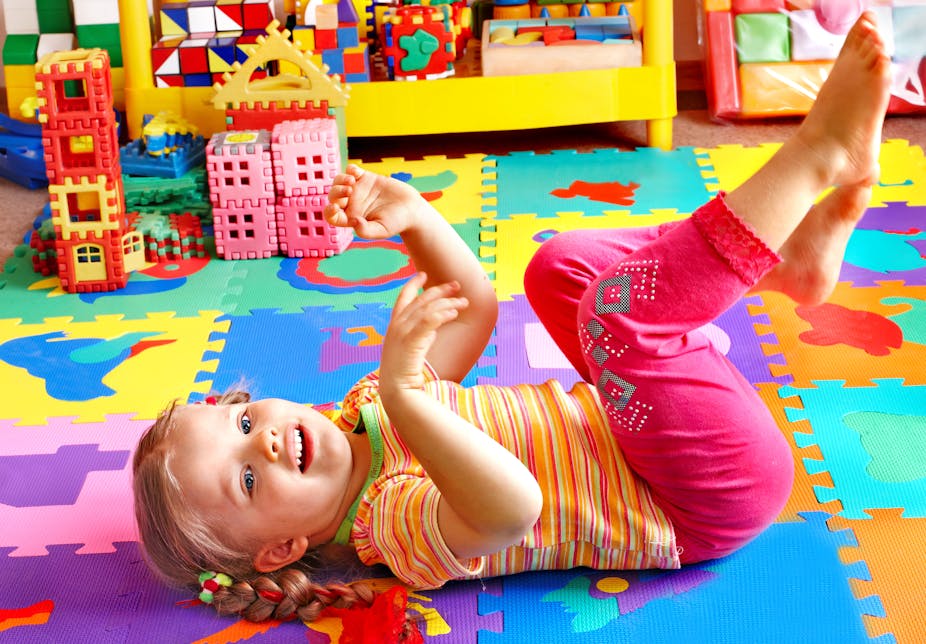The Productivity Commission is undertaking an inquiry into childcare and early learning. In a recent Issues Paper the commission suggests that there is an “inherent trade-off” between affordability and quality in early childhood education and care services. The implications of “trading” quality and affordability in early childhood education are troubling, especially for children from disadvantaged backgrounds.
The National Quality Framework
In 2009, all Australian governments agreed to establish a National Quality Framework (NQF) for early childhood education. The framework aims to improve the quality of early childhood education services, which include long day care, family day care, preschool/kindergarten and outside school hours care. Quality improvement will be achieved through a legislative framework, National Quality Standards, a national quality and rating process and a new authority (ACECQA) responsible for assisting with implementation.
The NQF took effect in January 2012 and sets requirements for qualifications, educator-to-staff ratios and other staffing arrangements.
The costs of these requirements for families and early childhood education services have caused some concern. The Productivity Commission suggests that:
There are also inherent trade-offs between different aspects of early childhood education systems … Measures to improve the quality of childcare and the standard of learning and development outcomes could often be expected to put additional cost pressures on early childhood education providers, therefore working against the achievement of the objective of improving affordability.
However, we need to ask why there is an inherent trade-off in the Australian early childhood education system and to consider the implications of making this “trade”.
The high stakes of early childhood
In any sector, large-scale improvements, such as those required as part of the quality framework, are likely to cost money. In a sector that comprises for-profit services, such as the Australian early childhood education sector, it is not surprising, therefore, that improvements in quality have met with some resistance.
The “market model” for early childhood education and care has led us to believe that a trade-off between quality and affordability in early childhood education is inevitable. Can we imagine a similar trade-off in the healthcare sector? Do we want high-quality unaffordable healthcare or poor-quality affordable healthcare?
What about schools? Do we want high-quality schools that some parents cannot afford or poor-quality schools that all parents can afford?

These questions are unpalatable. We want both quality and affordability, and we expect it. Why then are we willing to accept a trade-off in early childhood education? Is it because the stakes are not as high?
In fact, the stakes are high. High-quality early childhood education can make a significant contribution to outcomes for children, especially children from disadvantaged backgrounds. Most notably, the US Perry Preschool program, which provided high-quality early childhood education to children from disadvantaged backgrounds, is still benefiting participants even once they reach the age of 40.
The economic return to society by the time these participants were 40 was US$244,812 per participant on an initial investment of $15,166. Similar programs have also been shown to reap significant economic returns.
Just as high-quality education and care is especially beneficial for young children from disadvantaged backgrounds, poor-quality early childhood education has especially negative effects. It is important to note a recent study that showed that the quality is lower in less affluent Australian neighbourhoods. These findings provide strong support for national quality standards so that all Australian children have equal access to high-quality early childhood education.
Challenging the ‘trade-off’
There are two reasons why we might accept that quality and affordability are a “trade-off” in the early childhood education system and that we can’t (or shouldn’t) expect both.
Firstly, if we don’t understand the importance of early childhood – and the significant contribution that high-quality early childhood education can make to children’s long-term outcomes – we may be willing to accept that improving quality is not as important as affordability.
Of course, affordability for individual families is a critical issue. We need to ensure families are not burdened by the increased costs associated with improving early childhood education quality. Most importantly, there is no point having a high-quality system if those children that stand to benefit the most from it – that is, children from disadvantaged backgrounds – cannot access it. Similarly, an affordable system that cannot provide high-quality care and education would be a monumental wasted opportunity.
Secondly, if we accept that early childhood education is open to profit-making businesses, we may be more willing to accept a “trade-off” between quality and affordability. After all, improving quality has the potential to undermine profit if those costs are borne at least partly by service providers. The cynics amongst us may ask then if the “trade-off” is in fact quality and affordability or quality and profit.
Improving the quality of early childhood education will cost money. The question of who should bear those costs is an important one. However, we cannot let the issue of cost undermine the quest for improvement. And we cannot accept that a choice between quality and affordability is inevitable.
In the end, all Australians will benefit from a high-quality early childhood education system that is affordable for all.

